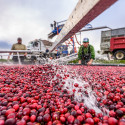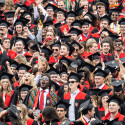Book Smart
 Hoodlums: Black Villains and Social Bandits in American Life
Hoodlums: Black Villains and Social Bandits in American Life
William L. Van Deburg, Evjue-Bascom Professor of Afro-American Studies
University of Chicago Press, 2004
Some 400 years after the members of different races began to meet in what eventually became the United States, race issues and ramifications continue to trouble and haunt this country.
Van Deburg believes that a lot of the problem has to do with the way racial and ethnic groups view each other. He says in “Hoodlums” that there is no stronger support for this argument than the way the predominant culture portrays villains.
Looking at historic and legal documents, Hollywood films, song lyrics and poetry, this book is the logical successor to “Black Camelot,” which examined African-American heroes including musicians, athletes and movie stars.
In the course of his research Van Deburg ran across an arresting rogues’ gallery: the African-American sugar planter Andrew Durnford of Louisiana; slave-era subversive Gullah Jack, hanged in Charleston in 1822; cowboy-outlaw Cherokee Bill; St. Louis pimp and killer Stagolee; serial murderer Wayne Williams; hip-hoppers Luther Campbell and Chuck D. and many more.
Van Deburg’s own favorite roué is the late hip-hop star Tupac Shakur, in particular, Bishop and Birdie, a brace of gangsters he portrayed in the films “Juice” and “Above the Rim.”
“What marvelous performances, creepy and charismatic!” Van Deburg says. “Shakur’s death in 1996 deprived both the hip-hop community and Hollywood of a major talent. To his fan base, his death was comparable to Elvis’. And Tupac was a much better actor.”
This semester Van Deburg is incorporating both books into his course Blacks, Film ands Society. He says that the hero/villain theme seems to inspire his students to heightened reflection and creativity. And rightly so: Van Deburg says that it’s impossible to overstate the cultural importance of our villains.




